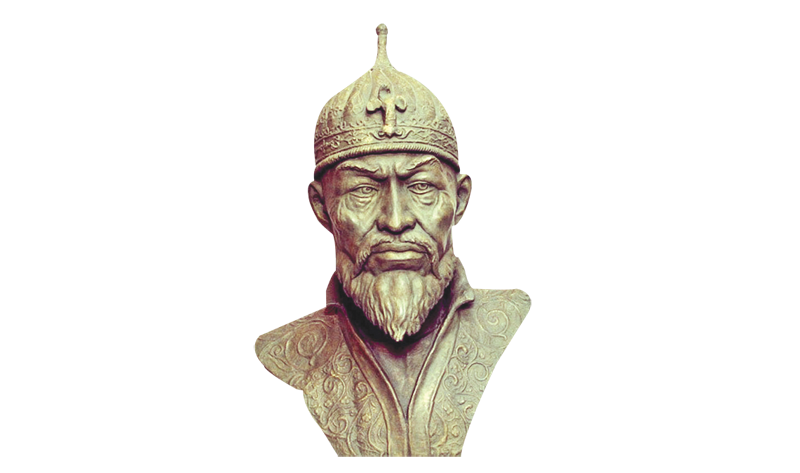

While in Ireland over the Festive Season, I asked one of my nephews, a graduate in History from a respected university, if he had ever heard of a historical figure known as Timur (lit. Iron). I was surprised to find that he hadn’t the faintest notion to whom I was referring. Then I asked his sister, currently a third-year English Literature undergraduate at the same seat of learning. “Oh, do you mean Tamerlane?” She said.



“That’s right,” I said. “Timur-e Lang, or ‘Timur the Lame’ as he was derogatorily known to his enemies, which had been Anglicised to ‘Tamerlane’. Have you studied the play?” I was of course referring to the lurid and fanciful drama of that name by Christopher Marlowe, the Elizabethan playwright who so profoundly influenced William Shakespeare.
“Yes, do you want to hear some?” she said.
“No!” snapped my nephew, but which girl ever headed the wishes of her brother? And so she quoted …
“I hold the Fates bound fast in iron chains,
And with my hand turn Fortune’s wheel about,
And sooner shall the sun fall from his sphere
Than Tamburlaine be slain or overcome.”
Odd that Timur (1336-1405 CE) is so little studied today in the History departments of Western universities given the scale of his conquests. At his death, Timur’s dominions stretched from Syria in the west to the borders of China in the east and from the Russian Step in the north to the Deccan in the south. His territories were not the equal of those of his Mongol forbearer, Genghis Khan, yet the wholesale slaughters that accompanied Timur’s military campaigns were on an even more gargantuan scale than those of the Great Mongol.
Having committed such enormous genocide — an estimated 17 million people, approximately one fifth of the world’s population at that time — how did Timur manage to find enough skilled artisans to create his wonderful artistic and architectural legacy? The reason is that he, in keeping with the practice of the Mongol conquerors before him, often ordered the lives of artists and craftsmen to be spared while the entire populations of the towns and cities wherein they had worked were put to the sword. A lasting legacy, Timur well knew, depended not so much on the extent of his domains, which after all could be lost after his death, but more on beautiful and enduring monuments built in his name. To build these, he required highly skilled and experienced artists and architects, stonemasons and metal smiths, ceramicists and wood-carvers. In medieval Central Asia, an artistic training could literally be a lifesaver!
Although not his birthplace — that was Kish, today’s Shahrisabz — most of Timur’s surviving architectural gems are to be seen in his capital of Samarkand, in what Timur would have called Transoxiana but which we know today as Uzbekistan. The most sumptuous of Timur’s surviving monuments is the Gur-i Amir (lit. The Great Prince), completed in 1404 CE as a mausoleum for one of his favourite grandsons who had been killed in battle but which also became the last resting place of Timur himself just a year after its completion.
Those parts of this once magnificent complex that have survived earthquakes, invasions and the ravages of time have been subject to rather rigorous restoration in recent years. Of interest to us here is the ceramic tile revetment that lavishly adorns the high dome, drum, exterior walls, entrance iwan and the sole survivor of the original quartet of minarets. Many of Timur’s architects and craftsmen were of Persian origin, captured during his bloody sweep westwards in the earlier part of his career, which explains the loud echoes of Persian aesthetics in his monuments. These influences, though, were married to local ornamental techniques, most notably the decorative brickwork that had been practised in Transoxiana for centuries. The earliest (and most dazzling) extant example of this decorative brickwork is the Tomb of the Samanids in Bukhara, completed in 943 CE.
And so on the Gur-i Amir and other Timurid buildings, glazed and unglazed ceramic tiles were used in combination to make complex geometric designs that look modern to us even after 500 years. But in case Uzbekistan is not on your travel itinerary for the near future, you can see six fine examples of tilework in this style in the south cloister of the Sultan Qaboos Grand Mosque in Muscat.
When Soviet archaeologists had the effrontery to open Timur’s tomb in the Gur-i Amir in Samarkand on June 19, 1941, they are reported to have found inscribed on his ebony coffin the words “Whoever opens my tomb shall unleash an invader more terrible than I”. Inside the casket, they found that Timur-the-Lame’s skeleton was missing two fingers from its right hand and had severe damage to the right hip, consistent with a blow from a sword or an axe, that would seriously have compromised his mobility.
Two days after Timur’s exhumation, Operation Barberossa was launched, the spearhead of Adolf Hitler’s invasion of the USSR. While Moscow, Leningrad and Stalingrad were in turn subjected to the most ferocious assaults by the Luftwaffe and the Wehrmacht, the Russian archaeologists in Samarkand remained focused on their work, using Timur’s skull as the basis for a forensic reconstruction of how his face would have looked at the time of his death. Only when his remains were resealed in his vault was ‘Tamerlane’s Curse’ lifted from the land. Almost immediately after his reinterment, the German Sixth Army surrendered at Stalingrad.
Oman Observer is now on the WhatsApp channel. Click here



